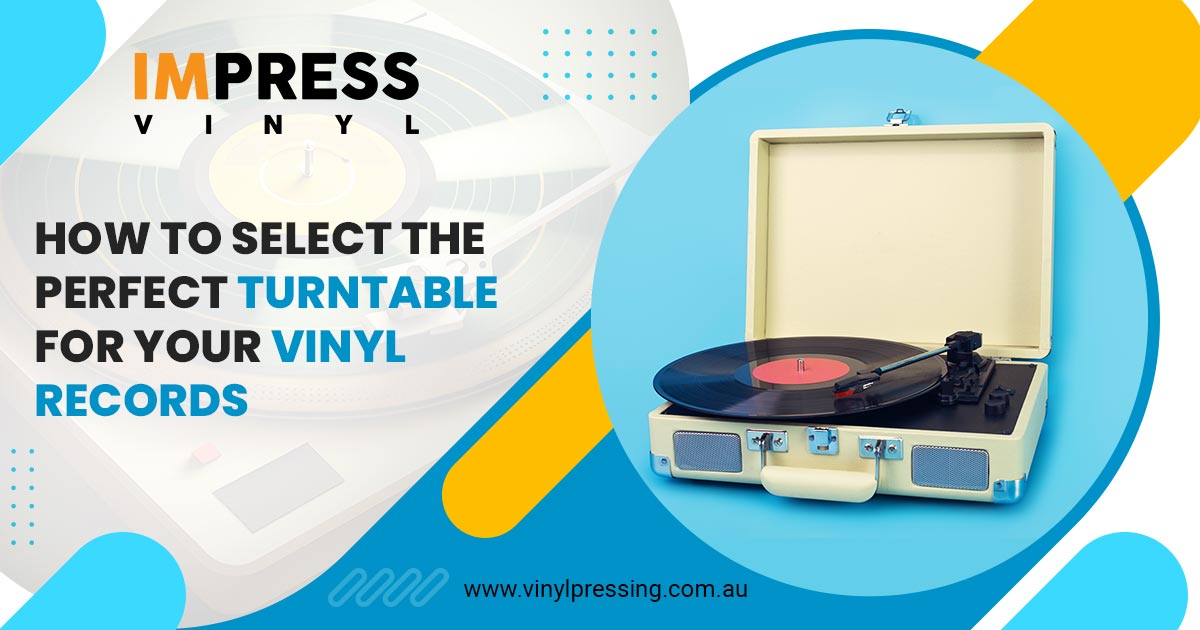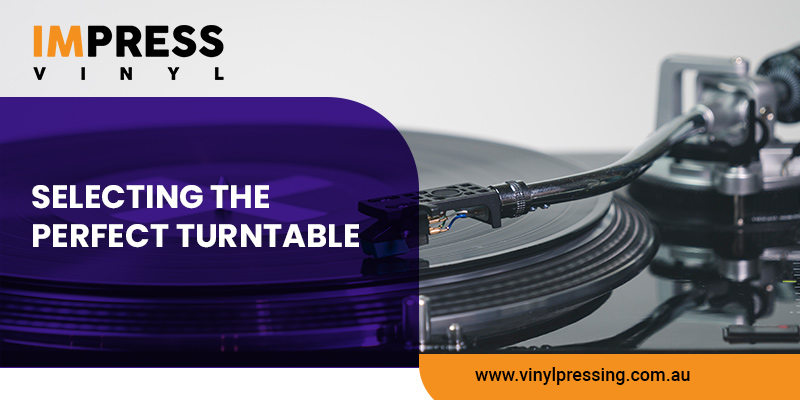How to Select the Perfect Turntable for Your Vinyl Records

Most people in today’s world are accustomed to tapping their phone screens to scroll through a digital streaming music.
Do you get the blues when you listen to music?
If so, you should invest in a turntable and a few of your favourite vinyl records, both of which are readily available in Australia’s vinyl record pressing marketplaces. The best way to listen to music is only on a vinyl record player. Turntable, preamp, amplifier, and speakers are all included in a record player as a single unit.
Many have treasured the warmth and details of classic albums archiving them for decades. The quality of music created by a vinyl record player will always be superior to that of streaming music.
Selecting the Perfect Turntable
Turntable is the key component of a record player which spins and holds the record. For a needle to track through the record groove and read the recorded information, this solitary unit offers a solid platform that spins the record, tonearm, and cartridge at a steady rate of speed.
The turntable offers the player rugged durability, precise control and exceptional sound quality that revitalises the music. When seen casually, nearly every turntable appears to be similar. Here are some important features to consider when buying your preferred turntable.
Main Parts and Key Features of a Turntable

The Motor
The platter’s rotation is caused by the motor. Belt-drive and direct drive are two available topologies that produce the torque needed to rotate the platter.
Platter
It is the spinning part of the turntable where records are placed. The platters, which are rotated by the drive systems, are dense to lessen rumble and mechanical disturbances that might interfere with the music. On the turntable’s base, the platter is placed.
Tonearm
The tonearm connects the record to the speakers. The task is to accurately track record grooves. The tonearm is typically straight, sturdy, light, and equipped with a spindle that guarantees silent and smooth platter spinning. It also features a frictionless bearing and very little resonance. While moving across the record, this tonearm keeps the cartridge in place.
Cartridge and the Needle
The most popular form of cartridge is a moving-magnet cartridge. The cartridge holds the needle/stylus and is pre-mounted on the tonearm. The stylus creates the waveform for the stereo channels by reading the record grooves and moving up, down, right and left. The motion of the record grove is converted into electrical signals by the magnets and coil inside.
Plinth
The turntable’s steady and resonance-free foundation is known as a plinth.
Pitch Control
Allows you to adjust the speed. Pitch control modifies the voltage supplied to the motor and alters the speed of the platter.
Cueing Device
Lifts and lowers the stylus from the record.
Feet
Absorbs vibrations to ensure that the turntable does not pick up skip-inducing rumble.
Tracking Force
Amount of force applied to a record by the cartridges to avoid bouncing back or excessive needle wear. It is adjusted at the end of the tonearm.
Phono Preamp
This can be integrated into a table, a receiver, or a speaker, or it can be housed independently. To get a precise and faint signal out of the speakers, the turntable must be fed into a phono preamp.
USB Output
Allows you to make digital copies of your albums and save them.
Turntable Build-Up and Materials
Whether you’re new to vinyl record player collections, an experienced collector of records, or looking to upgrade, the first step is to find the appropriate turntable. The way the turntable is constructed makes a significant impact on how turntable affects sound quality. The basic performance tests required include sound balance, speed accuracy, wow/flutter distortion, and signal-to-noise ratio.
Low-cost turntables are often constructed from an aluminium platter, tonearm, plastic body parts, a simple cartridge, a built-in preamp, and automatic operation.
Carbon fibre tonearm, steel/acrylic platter, basic cartridge, heavy plinth, and manual operation characterise the next category of turntables.
Turntables with the best analogue sound have trademarked materials in the platter, bearings, high-end cartridge, no built-in preamp, and superior engineering of the tonearm assembly, plinth, and wiring.
Hearing a vinyl record on the best turntable would undoubtedly restore that sensation of connection with music.
Types of Turntables
Automatic turntable
You only need to push a button and the turntable will do the rest of the job. Yes, the tonearm moves into position and lowers the needle to the leading edge of the record. When all of the songs are finished, the tonearm lifts and returns to its original position. This less appealing form of turntable necessitates frequent maintenance and produces reduced sound quality.
Semi-Automatic Turntable
Semi-automatic turntables require the tonearm to be manually lowered. The turntable automatically places the tonearm back in its starting position and shuts off the motor whenever your record is complete.
Manual Turntable
Many people prefer manual operation for its superior sound quality. There is a manual lever to lift the tonearm. Lift the tonearm, insert the needle in the lead groove, and then physically lift it off when the record is finished.
Each drive style has its specific fan base in the audiophile world, and it also refers to how the motor is connected to the platter.
Direct Drive Turntable
An electric motor is employed to directly spin the platter, producing significantly higher torque. Motor noise is decreased by using different platter materials and construction techniques. DJs prefer this because the platter accelerates faster with higher sound quality and accuracy, less boom and flutter, and no resistance. A trustworthy and cost-effective alternative.
Belt-Drive Turntable
Belt-Drive Turntables have a motor attached to the base and a belt connecting it to the platter. The sound quality is also the best, with less shaking and noise. These turntables are more expensive, but they are more dependable and long-lasting.
Idler-Wheel Turntable
A type of phonograph turntable with a belt-driven, free-spinning rubber wheel that spins at a steady pace. The wheel provides consistent propulsion to the turntable platter.
Integrated Record Player
This is a straightforward solution for playing vinyl records, especially for those who are hesitant to deal with the complexity of a separate turntable, amplifier, and speakers.
Conclusion
The best turntable indeed is designed to meet the demands of modern music production. Technology has advanced to the point where you can place your turntable anywhere and wirelessly transmit music to speakers throughout your entire home.
Select the best custom vinyl records and all the required accessories from the industry’s best Impress Vinyl. We cater to all your vinyl needs. The awe of seeing a spinning disc with grooves making a pleasing sound will never fade with Impress Vinyl.